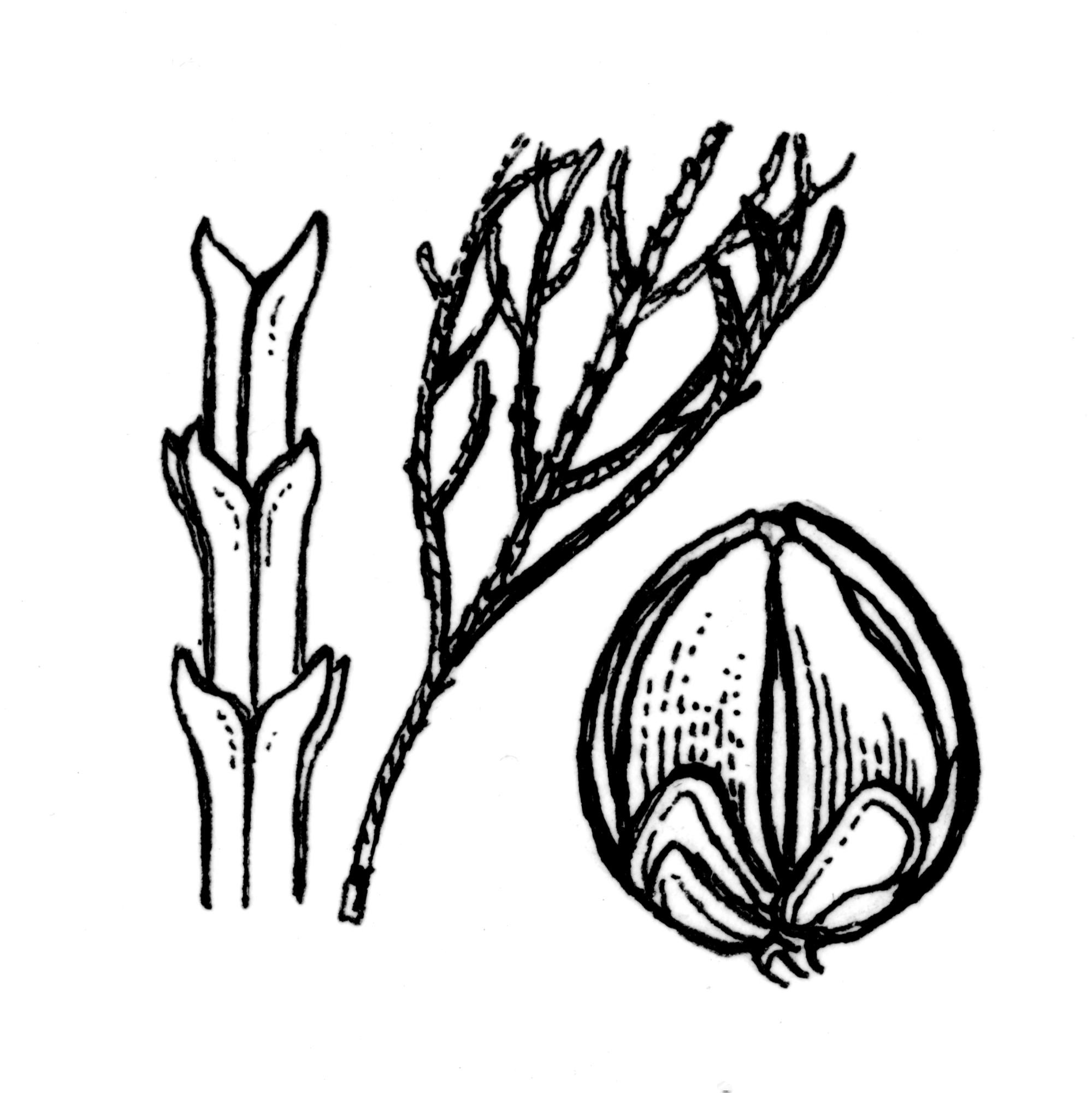
Greek aktis - ray, strobos - cone; referring to the ray-like bracts at the base of the cone.
Evergreen shrubs or occasionally small trees. Leaves when adult, in alternate whorls of 3, extending down the stem at the base and with tips spreading. Cones of both sexes on the same plant. Male cones solitary, terminal. Female cones ovoid-conical with two whorls of bracts at the base; scales 6, joined edge to edge. Seeds 3-winged, 1-2 per scale.
Rarely cultivated in south-eastern Australia.
3 species from south-western Western Australia, growing in sandplains and sandy swamps.
Mostly seed, but sometimes cuttings or grafting.
Leaves in 3s, similar to those of Callitris but the cones with similar-sized scales and, at the base, ray-like bracts.
Source: (1995). Cupressaceae. In: . Horticultural Flora of South-eastern Australia. Volume 1, Ferns, conifers & their allies. The identification of garden and cultivated plants. University of New South Wales Press.
